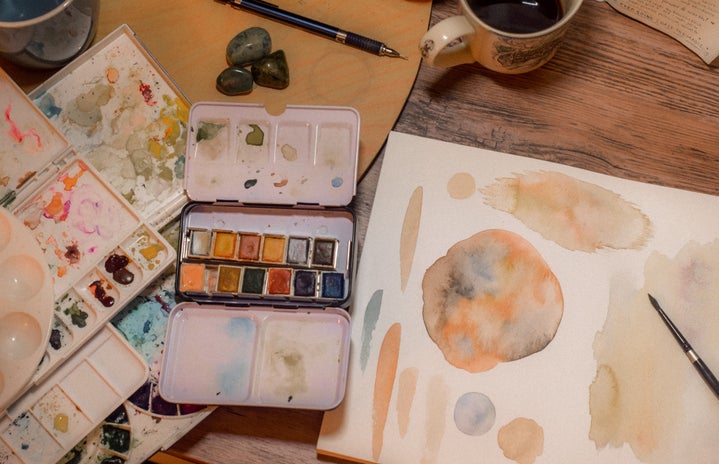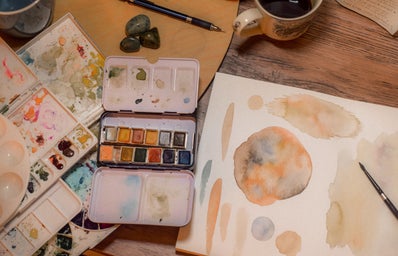Edited by: Lavanya Goswami
Trading Scoobie strings with different geometric designs achieved through great skill, aggressively striking snap bands at your wrist until they turn painfully red (do not recommend), duelling Beyblades against friends without the cool dragon animations in the anime (lamer in my opinion) are all shared experiences. Moreover, if you travel further back, colouring books are also dominant memories. For me, they unleashed a whole creative outlet which continued for an extensive time — until it didn’t.
Childhood mornings and afternoons, for me, were filled with artistic endeavours. Experiments with oil paints, watercolour, charcoal, and ink littered across drawing books, canvasses, and A3 sheets stuck together. Remnants could also be found all over my body. Flipping through sheets, you would find endless freehand straight lines and somewhat round circles done for practice. It wasn’t always a walk in the park. Art was an inescapable reality.
Fast forward to my tenth/ eleventh year of existence and the only compositions I’d created were doodles at the corners of my geography notebooks. Suddenly, academics and everything else had consumed me instead. I mean, it wasn’t all bad — I was finally seeing other remarks than big bold red question marks on my notebooks from teachers. Unspectacularly, art had somewhat disappeared.
Although the urge to sketch and colour were there, now it seemed to be too much of a bother. What would I draw? Where would I gain inspiration from? The empty sheet would just stare back at me, mocking. I had no convenient output source for my artistic urges which satisfied me. I could not participate in my creativity in the same way — it was too daunting. I guess, I was no longer confident in my abilities either. Maybe, I was even afraid to acknowledge the true degradation of my capabilities.
This remained for a long time.
Eventually, I stumbled across some ready to print colouring designs while procrastinating for deadlines I didn’t want to work for. It was a simple, scaled fish along with a more intricate puppy. “Animals are cute, why not?” I thought to myself. Well, I thought that several times but stopped due to unceremonious contemplations of how to colour in and not ruin the design at the same time. In the end, I had nothing left to preoccupy myself with, whilst ignoring my deadlines and picked up the colouring pencils as well as some markers.
Although there are some initial hiccups, the process can be described as a trance. To be lost in the intricate designs of the print. Experimenting with different colour combinations — preferably with a colour wheel open for reference because this is a serious task. Gradually, you become more and more invested in the process only leading to you start creating designs within the bold guidelines. There is a slow, steady letting go of inhibitions regarding the potential ruin of the image and deep concentration settles down in its stead.
The act of filling in a colouring book is completely monumental. There is a deep satisfaction in its completion. Possibly because bold, bright colours really are beautiful paired next to one another — they can even hide all the parts that you feel are not as great. In academics, or other fields of interest, there is not always a physical representation of the work that you have spent a considerable amount of time on. However, art even in the simplest form of a colouring book has a somewhat clear end result.
I wouldn’t say that my dexterity in the field of colouring or sketching has been proven by this endeavour, but it can be described as a stepping stone. Embroidery and origami were some other new ventures I tried afterwards.

